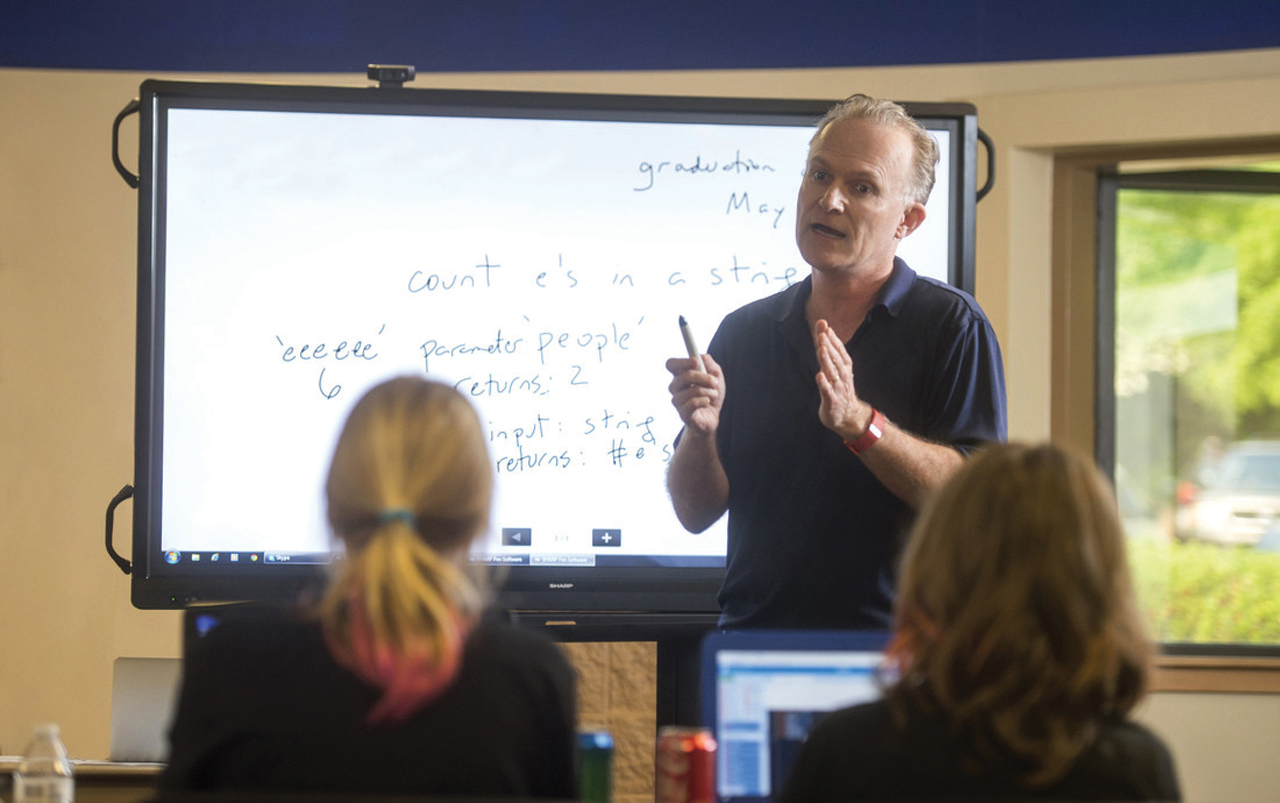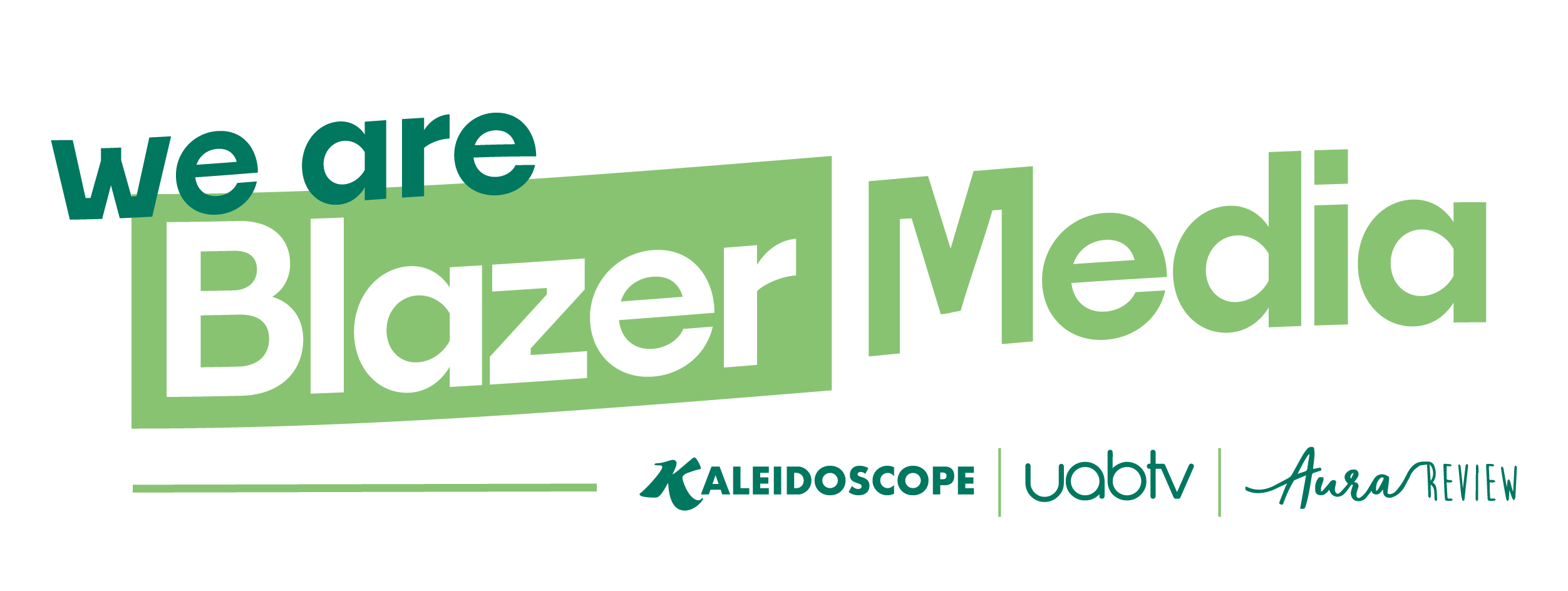
John Johnstone, Ph.D., an associate professor of UAB’s Department of Computer Information and Sciences, oversees Girls who Code’s local chapter. Photo courtesy of Matt Windsor
Tessa Case – News Editor
news@insideuab.com
New programs, such as Girls Who Code and a new Bachelor’s of Arts program, are hoping to increase interest in computer sciences, especially those who identify as female, throughout Birmingham and UAB.
Birmingham is home to Alabama’s first chapter of Girls Who Code, a national nonprofit organization dedicated to closing the gender gap in technology. John Johnstone, Ph.D., an associate professor at UAB’s computer information and sciences department, oversees the Birmingham chapter. He said the group targets females ages 10 and older, and aims to instruct on aspects of coding and computer sciences that aren’t taught in high school.
“I think it is so great to have Girls Who Code,” said Biodoumoye Bokolo, a UAB student pursuing a Bachelor of Arts degree in computer and information sciences, a new program offered by UAB and the first of its kind in Alabama. “It is a step in the right direction, and a very vital one too. I don’t think people expect ladies to be involved in this field, and that has to be changed.”
According to the National Center for Women and Information Technology’s website, women earn 57 percent of all undergraduate degrees, 42 percent of all undergraduate math and statistics degrees, 40 percent of all undergraduate physical sciences degrees but only 18 percent of all undergraduate computer information and sciences degrees.
“We are missing out on half of the population,” Johnstone said. “It’s something we are aware we need to improve, and the idea with Girls Who Code is to extend exposure.”
Bokolo said she wished she had been exposed to coding and computer sciences before she entered college. The sentiment was shared by Amalee Wilson, a UAB graduate with a B.S. in computer and information sciences.
“I’ve been programming for only three years or so. This is unfortunate because many of my peers, especially men, have been programming or at least dabbling with scripting since they were in middle or high school,” Wilson said. “The difference in experience feels like a disadvantage sometimes.”
Wilson said that like many women in computer science, she didn’t discover the field until after she was already in college. She took an Introduction to Programming in Java course and fell in love with the approach to problem-solving. Wilson said that there are resources for college-aged women interested in coding, such as the Birmingham chapter of Women Who Code. The official website for Women Who Code describes the group as a nonprofit dedicated to inspiring career aged women to excel in technology careers.
“I think the best way to get more adult women programming is to make it clear that coding is just another tool, like being able to make a PowerPoint presentation,” she said.
“Computer science is omnipresent and interdisciplinary,” Johnstone said. “It touches anything someone is interested in.” Johnstone said he was happy that UAB approved the B.A. in CIS program over the summer. The program has already begun to accept students, and classes will start in the fall with an introductory course to Python, a coding language, and its various applications throughout multiple disciplines.
“The B.A. program is a wonderful idea, and I just switched to it actually,” Bokolo said. “I had serious difficulties with biology and my best bet was switching from the B.S. to the B.A. I am happy there is a provision now for people who don’t love science and who feel they are stranded with the mathematical requirements.”
Bokolo also said she is satisfied with her choice in degree, and that all the hard work and hours of dedication are worth it because it is not only her passion, but also the large job field that is developing and the salary she can expect to earn which, according to Forbes, typically starts off around $60,000 with an undergraduate degree. Wilson, who will be starting the Ph.D. program for C.I.S. in the fall, added that her first class in programming, despite the difficulty, was the most fun she had ever had in a college class.
“We want people to say, ‘Whoa, this is an exciting area,’” Johnstone said. “We want the other half of the population, the women, to feel that way. There are so many opportunities. I had a classmate, a woman, who ended up beating me by 0.1 percent for the top score. She went on to animate all the trees for Pixar’s “Toy Story.””
Wilson suggested CodeCademy’s free online tutorial for learning to code with Python for beginners interested in coding but not knowing where to start.
“Just try it out,” Johnstone said. “You’ll have a lot of fun, and it’s a powerful new way to express your ideas.”
